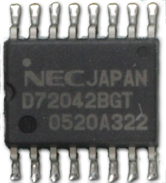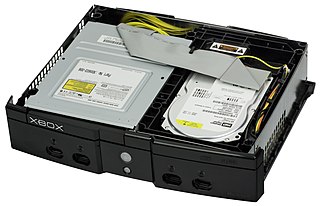Sega Aurora (Not exactly the same as the "Sega System SP") is a highly integrated hardware platform that Sega Sammy developed to power amusement devices like their pachinko/pachislot machine displays and arcade games and to also be sublicensed to outside manufacturers who are looking to build multimedia portable and embedded systems. It was developed by SI Electronics Inc, a former Sammy subsidiary. It was introduced in 2004 and is primarily based on an enhanced Dreamcast hardware. The name "Aurora" derives from a top secret code name that Sega Enterprises, Ltd. used during the development of Sega Saturn in the mid 1990s. [1] As SI Electronics left Sammy Holdings after being acquired by Kaga Electronics in July 1, 2008, they made the "System Board Y2" platform in 2009, mainly known for the game "King of Fighters 2002: Ultimate Match".

The Dreamcast is a home video game console released by Sega on November 27, 1998 in Japan, September 9, 1999 in North America, and October 14, 1999 in Europe. It was the first in the sixth generation of video game consoles, preceding Sony's PlayStation 2, Nintendo's GameCube and Microsoft's Xbox. The Dreamcast was Sega's final home console, marking the end of the company's 18 years in the console market.

Sega Games Co., Ltd. is a Japanese multinational video game developer and publisher headquartered in Tokyo. Its international branches, Sega of America and Sega Europe, are respectively headquartered in Irvine, California and London. Sega's arcade division, once part of Sega Corporation, has existed as Sega Interactive Co., Ltd. since 2015. Both companies are subsidiaries of Sega Holdings Co., Ltd., which is in turn a part of Sega Sammy Holdings.

The Sega Saturn is a 32-bit fifth-generation home video game console developed by Sega and released on November 22, 1994 in Japan, May 11, 1995 in North America, and July 8, 1995 in Europe. The successor to the successful Sega Genesis, the Saturn has a dual-CPU architecture and eight processors. Its games are in CD-ROM format, and its game library contains several arcade ports as well as original games.
Contents
Aurora is made of a Renesas System-on-Chip named SH3707 which incorporates the technologies of partner companies that worked on the Dreamcast and related systems. Its CPU core is Renesas SH-4 based technology with FPU clocked at 300 MHz. Its GPU core is a PowerVR MBX accelerator with VGP co-processor running at 150 MHz. On-chip audio and video hardware supply the system with the capability for ADPCM and MPEG1/2/4 respectively.

A central processing unit (CPU), also called a central processor or main processor, is the electronic circuitry within a computer that carries out the instructions of a computer program by performing the basic arithmetic, logic, controlling, and input/output (I/O) operations specified by the instructions. The computer industry has used the term "central processing unit" at least since the early 1960s. Traditionally, the term "CPU" refers to a processor, more specifically to its processing unit and control unit (CU), distinguishing these core elements of a computer from external components such as main memory and I/O circuitry.

A graphics processing unit (GPU) is a specialized electronic circuit designed to rapidly manipulate and alter memory to accelerate the creation of images in a frame buffer intended for output to a display device. GPUs are used in embedded systems, mobile phones, personal computers, workstations, and game consoles. Modern GPUs are very efficient at manipulating computer graphics and image processing. Their highly parallel structure makes them more efficient than general-purpose central processing units (CPUs) for algorithms that process large blocks of data in parallel. In a personal computer, a GPU can be present on a video card or embedded on the motherboard. In certain CPUs, they are embedded on the CPU die.
PowerVR is a division of Imagination Technologies that develops hardware and software for 2D and 3D rendering, and for video encoding, decoding, associated image processing and DirectX, OpenGL ES, OpenVG, and OpenCL acceleration. PowerVR also develops AI accelerators called Neural Network Accelerator (NNA).









